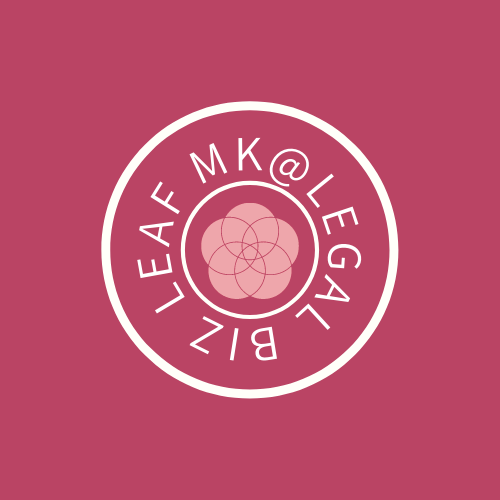Issuance of Shares by Contribution in Kind
When issuing shares by an allotment, money is not the only property that investors can contribute. In addition to money, it is also possible to contribute shares, movable properties, real estates, cryptographic assets, claims against the company, etc. (“Contribution-in-kind”).
The procedural flow for Contribution-in-kind is not much different from that for contribution in cash. Except, the proof which certify that the value of properties to be contributed is not unreasonable is required.
Matters of subscription in the case of contribution in kind
The following is an example of the minutes of a private company that adopts a resolution to issue shares through third-party allotment by contribution in kind. For an explanation of each item, please refer to here.
Item 1: Issuance of shares for subscription
The Chairperson stated that the Company would like to issue the shares for allotment as follows and explained the reasons in detail. The Chairman put it to the vote, all shareholders unanimously agreed with it. Accordingly, the Chairman declared that the item was approved as follows.
(1) Type and number of shares for subscription: Ordinary Shares 100 shares
(2) Method of issuance of shares: Third-party allotment
(3) The Amount to be Paid in: 10,000 yen per share
(4) Contribution in kind:
i. Investor in kind: XX Tanaka
ii. In kind property: Out of the loan of 2,000,000 yen between the creditor XX Tanaka and the debtor ABC Kabushiki-Kaisha as of X/X/2022, until the loans have reached 1,000,000 yen from the loans dated X/X/2022 in the order of occurrence.
iii. Value of the property: 1,000,000 yen
(5) Due date: X/X/2022
(6) Matters concerning the amount of capital and capital reserve to be increased:
– The amount of capital to be increased shall be 1/2 of the maximum amount of increase in capital. In cases there is a fraction as a result of the calculation, the fraction shall be rounded up. The amount of capital reserve to be increased is the amount of capital to be increased subtracted from the maximum amount of increase in capital.
(7) Method of allotment of shares: Subject to subscription, shares shall be allotted as follows.
Subscriber: XX Tanaka
Number of Shares: Ordinary Shares 100 shares
Amount to be paid-in: 1,000,000 yen
Investigation of the value of the contribution-in-kind
In principle, when making a contribution-in-kind, it is necessary to investigate whether the value of the properties, as determined at the time of the offering, is appropriate.
i.e., This is done to prevent a situation such as the value of the contributed property is thought to be 1,000,000 yen, but in fact the market value is 100,000 yen.
However, this investigation procedure is rarely performed in practice.
This is because the company shall file a “petition for the election of an inspector” with the court to have it elect the inspector, which is time-consuming and expensive.
To avoid this procedure, exception provisions are made in Article 207 Paragraph 9 of the Companies Act. If any one of following applies, it is not necessary to file the petition for investigation.
A. Issuance of minority shares
When the total number of shares to be allotted do not exceed one-tenth of the total number of shares issued.
Example:
Total number of existing shares: 100 shares
Newly issued share by contribution-in-kind: 10 shares
B. When the total value of properties do not exceed 5 million yen
Example: In the above example of the minutes, when “(4) iii Value of the property” is 5 million yen.
C. Marketable securities
When securities of the listed companies are contributed, and the value determined for such securities is less than the market value*, it is considered to be a fair value.
* Market Value (Article 43 of the Ordinance for Enforcement of the Companies Act):
The higher of the following amounts:
(i) The closing price in the market on which the securities are traded, or if the date falls on a holiday for the relevant market, the execution price of the first sales transaction after that point.
(ii) If the securities are the target of a tender offer, etc., the price of the securities in the contract in relation to the tender offer, etc.
D. Monetary claims (limited to those that have become due and payable)
When monetary claims against a company is contributed, and the value determined for such monetary claim does not exceed it’s book value.
→This type of contribution-in-kind is the most common type of contribution in practice. Even if the claim is not yet due and payable, it is possible to contribute if the creditor waives the benefit of deadline.
Example: If ABC Kabushiki-Kaisha has not paid the monthly Director’s remuneration to Director A, Director A can contribute his claim against the company and receive shares to be issued by the company.
E. Obtain certificate from a lawyer, legal corporation, certified public accountant, auditing corporation, certified tax accountant or certified tax accountant corporation.
*(in the case where the assets are real estate, such certification and appraisal by a real estate appraiser)
This method is taken only when none of the 1 to 4 above applies. Also it is to be awarded that this certificate cannot be prepared by company’s officers, even though they have such qualification.
Example: If real estate is to be contributed in kind, a company can request a lawyer, etc. to prepare a certification regarding the reasonableness of the value determined, and a real estate appraiser to prepare an appraisal.
MK @ 08/07/2022
 MK @ Legal Biz Leaf
MK @ Legal Biz Leaf 
